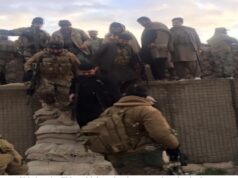The Pokhran nuclear tests by India was seen as an action to secure nuclear deterrence against its giant neighbour and therefore it raised concerns in China. Atal Bihari Vajpayee, the Indian Prime Minister then set up the Special Representative (SR) mechanism to resolve the boundary dispute with China which helped stabilise bilateral ties between the two countries, stated Ma Jiali, Director of the Centre for Strategic Studies at China Reform Forum.
Atal Bihari Vajpayee is regarded here as an architect of India’s China policy, according to Chinese scholars. Ma, who worked closely with former Chinese premier Wen Jiabao on the Sino-India ties. As per him Vajpayee’s visit to China in 2003 contributed a great deal in stabilising bilateral relations. “During Vajpayee’s rule, India-China relations improved a lot. After his visit in 2003, India-China relations improved quite fast in the political, economic and cultural field “, he said.
In 2016, Dai Bingguo, China’s long-term negotiator of boundary dispute with India, wrote in his memoir that Vajpayee was for an early settlement of the Sino-India boundary dispute but the opportunity was lost as BJP lost the 2014 general elections.
Vajpayee had wanted the SRs to detach themselves from the current boundary negotiations and directly report the progress to their prime ministers to find a solution “from a political level”, Dai wrote in his book.
The boundary mechanism headed by the National Security Advisors (NSAs) of both the sides then met 20 times and worked out the modalities for future settlements.
The first round was held between Brajesh Mishra, who was the NSA in the Vajpayee government and Dai, the then state councillor a top diplomatic post in China.
The 21st round of boundary talks are due to be held now in the coming weeks between NSA Ajit Doval and State Councillor and Foreign Minister Wang Yi in Beijing. Wang was the Vice Foreign Minister when Vajpayee visited Beijing in 2003.
Dai, who held the border talks with four Indian NSAs Brajesh Mishra, J N Dixit, M K Narayanan and Shivshankar Menon, has said in the book that Mishra pushed for an early settlement, preferably during Vajpayee’s tenure as prime minister.
Dai wrote “prime minister Vajpayee is 79-year-old and very concerned about the boundary question. Mishra was himself 75, and said he hoped to settle it as early as possible”. Dai wrote that he believed a settlement was possible but the opportunity was lost when Vajpayee failed to win the 2004 elections.
He stated that Mishra told him that he would like “to speed up the progress of the SRs meetings to push for an early settlement after the 2004 general elections in India. Dai, who is now retired, said that he believed Mishra’s words were not empty rhetoric and he felt that an early settlement was perhaps possible.
“I had hopes (during that time) that the SRs’ meeting would achieve results as early as possible,” he said. Though a settlement still appeared to be a long way after 20 rounds of talks, the mechanism with annual meetings has helped evolve modalities and identify areas of agreement and differences.
The India-China dispute cover 3,488 km long the Line of Actual Control (LAC) and China’s claims of Arunachal Pradesh being part of Southern Tibet remains a sticking point.
Two days ago, Bharatiya Janata Party General Secretary Ram Madhav told the media here that a “large segment” of the border with China barring the western sector has been resolved and talks are moving in the positive direction.
Doval’s predecessor Shivshankar Menon, who represented India in several rounds of border talks, said in 2014 during a meeting here that all the technical work has been done and it is for the leaders of both the countries to take a call.
After relinquishing his post, Menon told a meeting in Beijing along with Dai that when the SRs were appointed in 2003, the two sides set off a three-stage process.
The two countries first reached an agreement on the guiding principles and setting political parameters for the settlement in 2005, he said.
The second stage is to agree for a framework of settlement to be followed by the final step of drawing the boundary line based on the framework agreement, Menon said. “We are now in the second half of the second stage, heading in the right direction,” he told a gathering in Peking University in December 2014.
Now the meeting of the SRs which is held once a year has been upgraded to discuss all aspects of India-China relations and work out durable solutions.




